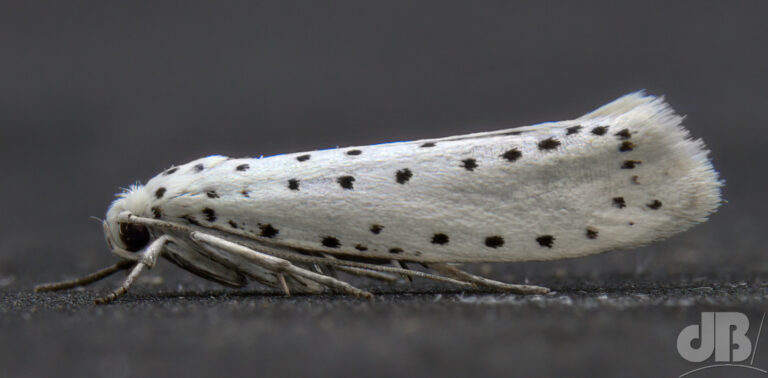Artificial light at night, a ubiquitous byproduct of urban life, is have a negative effect on the natural world. A study in the journal Biology Letters has looked at the impact on moths, and specifically the Spindle Ermine moth, Yponomeuta cagnagella. The research shows that light pollution is not only disrupting insect behaviour, but could be driving evolutionary change that is changing the wing shape and morphology of this moth, and perhaps others.

Spindle Ermine is a night-flying moth and like many others is drawn to sources of light, a phenomenon known as positive phototaxis. In modern urban environments, moths drawn to streetlights or lit buildings often fail to find mates, suffer from disorientation, or fall prey to predators. These factors reduce their ability to reproduce and survive.
Earlier research has shown that urban moths display weaker phototaxis than their rural counterparts. This divergence raised questions about whether the shift was environmental, perhaps due to repeated exposure, or whether it indicated a deeper, evolutionary adaptation to urban conditions.
The new research found wing morphology is different between moths of this species with strong phototaxis compared to a weak response. Moths from urban areas tend to have smaller wings compared to those from rural populations (laboratory-reared populations). This change is genetic and inheritable, not just a generational response to the local conditions. Given that wing size correlates with flight capacity, smaller wings typically suggests reduced mobility.
The study showed that moths with smaller wings were less likely to be attracted to artificial light sources, supporting a hypothesis known as the “reduced mobility hypothesis.” This theory suggests that urban environments, with their almost constant illumination, may exert selective pressure favouring individuals that are less prone to wander or fly extensively.